This article is very full subjective opinions. Be patient and understanding.
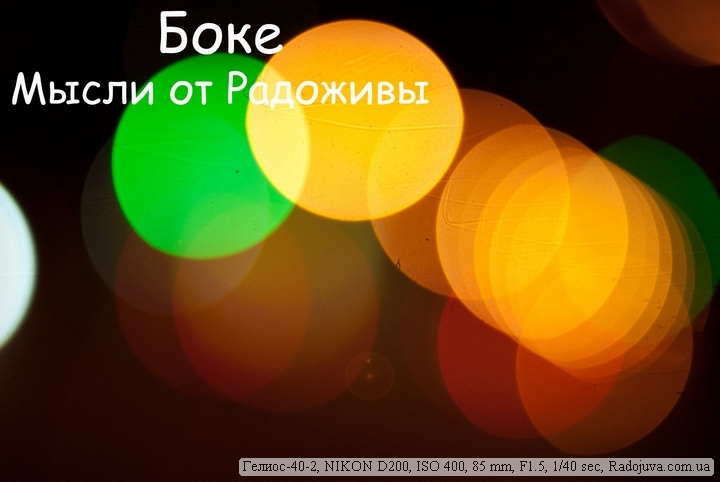
Bokeh Thoughts from Radozhiva
Bokeh is the “character” of an image outside the focus area, its intensity, and its effect on the overall image. Roughly speaking, this is how blurry the image out of focus area. The term "blurry" is not entirely technical, but as much as possible to describe what happens to the image outside the focus area. The image is “blurred” as if the artist took and mixed colors.
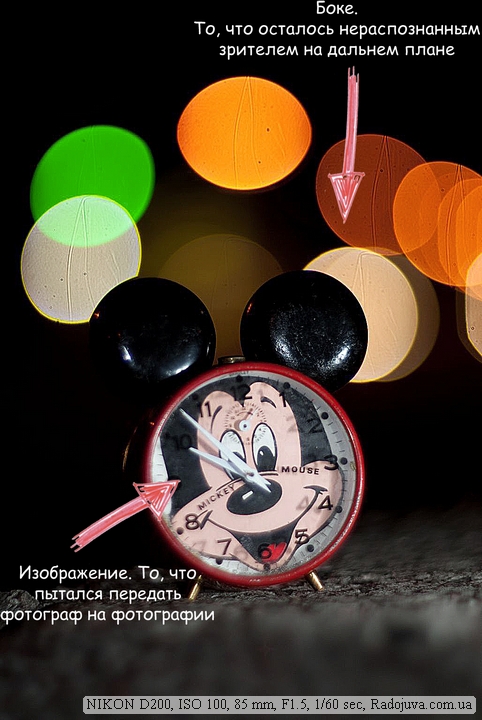
Bokeh It is like that. My watch for photo tests.
When focusing, the camera sharpens only those objects that the lens focused on. All other objects in the frame are not sharp. Moreover, objects can be very highly blurred, or blurred just a little bit. Usually, the image clearly shows the area in which the objects are sharp. Such a zone can be measured in width (depth).
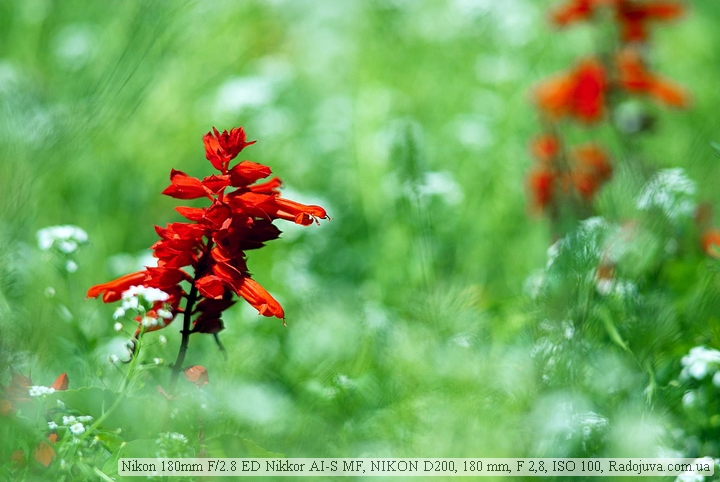
Bokeh. Example. Notice the “papery” crumpled pattern in the upper left corner.
For the width of this zone is responsible DOF lens - Гlubina Рkeenly Иimaged Пrostranstva. English equivalent of DOF. Bokeh is directly related to the blur zone, which is the back of the depth of field. Therefore, influencing the depth of field, you can objectively affect the bokeh.
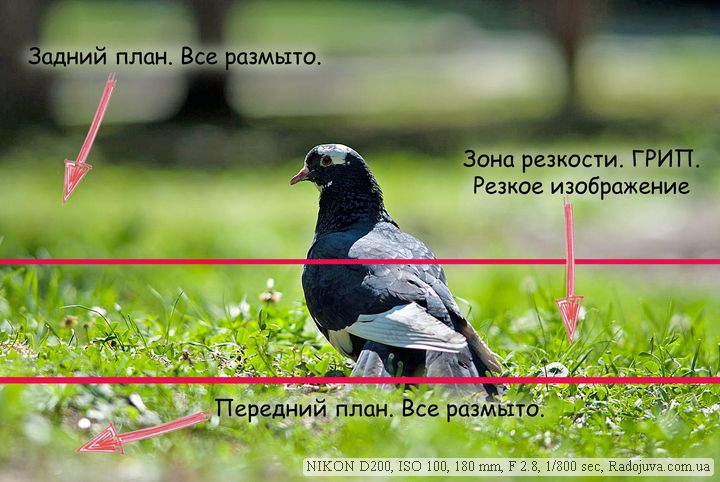
Depth of field. DOF. DOF.
The following parameters are responsible for the intensity (strength) of the blur (bokeh):
- Focal length of the lens... The longer the focal length of the lens, the easier it is to blur the background and increase the degree of blur.
- Aperture lens. The larger the relative aperture (the smaller the F number), the easier it is to achieve strong blurring of the image in the non-sharpen area and increase the blur circles outside the depth of field.
- Aperture View. Typically, when closing, the diaphragm cannot remain as round as when fully open. This is due to the limited number of aperture blades. With closed apertures, instead of discs (circles, circles), polygonal figures appear in the blur zone.
- Focus distance... The closer the focuser position is to the MDF (minimum focusing distance), the stronger the blur will be. Therefore, even with a “dark” lens, you can get good blur by shooting close-ups when the lens is in focus as close as possible. Conduct an experiment, take your whale lens (or any other), turn off autofocus, set the MDF and try to take off any little thing, for example, a flowerpot, a cup of tea. Then look at the out-of-focus area, it will be very blurry.
- Optical circuit lensa, which, in fact, forms an unusual pattern for each lens separately. Personally, I consider a good optical circuit with nice bokeh, a Sonnar circuit. But now it’s just a sea of other good lenses with incomprehensible multi-lens designs and nice bokeh. Optical design of some lenses, such as Nikon AF DC-Nikkor 105mm 1: 2 D Defocus Image ControlIt has a special ring for bokeh control.
- Indirectly affects matrix size. Simply, with the same lens for the same composition (frame composition) with a different matrix size, there will be a different focusing distance, therefore, the intensity of the blur is higher. More details in the section on Crop factor.
- Background and foreground. It is very important that there is an understanding that the blur pattern depends on what will blur. Bright single light sources usually turn into luminous discs, and a uniform background into soft plastic porridge.
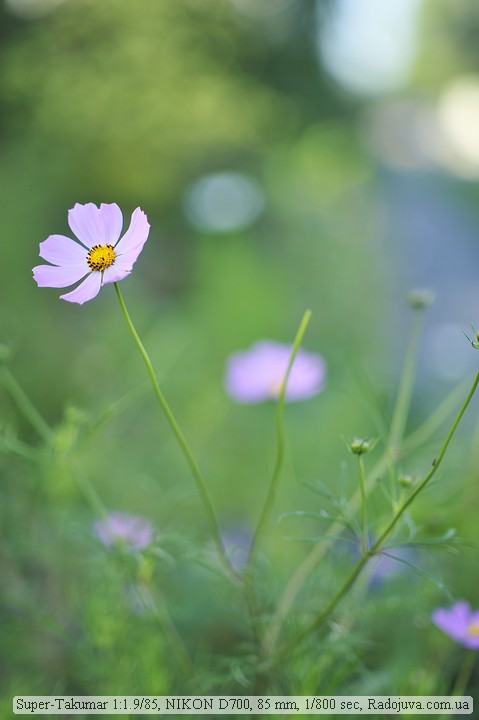
Creamy soft bokeh
You can, of course, still use soft filters, gradient, point filters for blurring.
Objectively, you can only talk about discs in the blur zone, their size, type, shape. I call these discs “rounds”. The discs have a peculiarity - a transition from a light inside to a darker outside. Bokeh in which discs have a small border width are commonly referred to as “fish scales”.
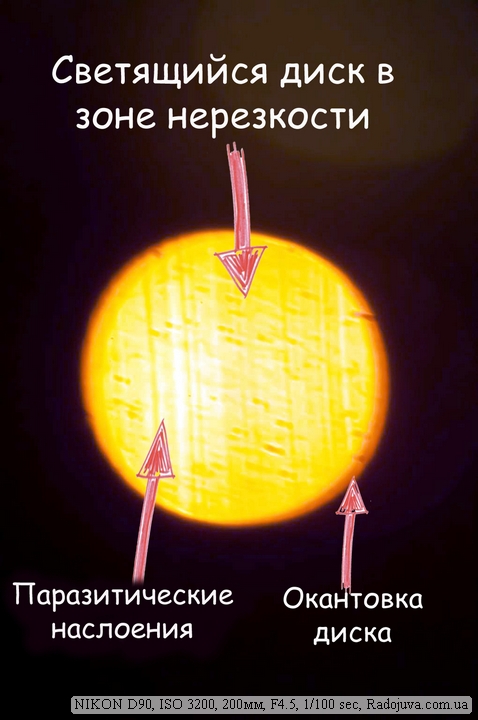
The disc is in a blur zone. 200mm, F4.5. Not a crop.
The shape of the light spot (disk) depends very much on the shape of the diaphragm. At maximum aperture, almost all prime lenses have a smooth aperture hole. When you close the diaphragm, its blades form all kinds of patterns. The most common are nuts circular saws, rectangles, squares. You can make the form yourself. Below is a snapshot of the usual 7 coal nuts.
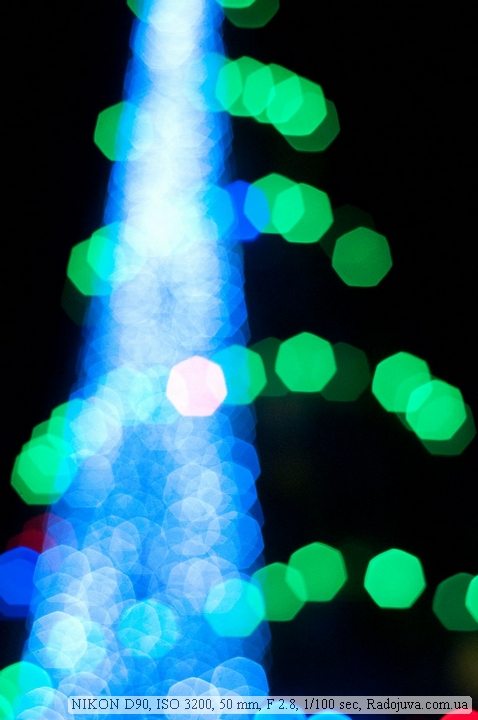
Nuts in the bokeh. 7 angles.
What types of bokeh are there?
Usually, Western literature distinguishes two types of bokeh: hollywood (Hollywood Style Bokeh) and cream bokeh (Creamcheese Bokeh). I almost never saw divisions into these two types in the CIS, but I adhere to such a simple gradation.
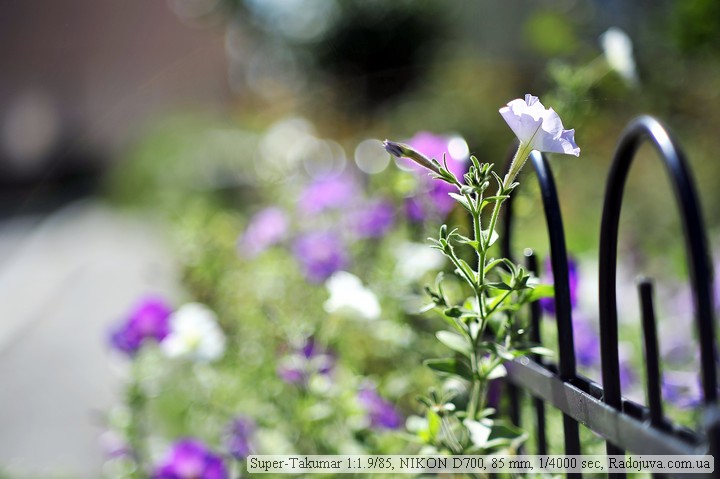
Bokeh with discs (circles) in the blur zone
Hollywood Bokeh - bokeh, in which glowing circles (disks) are pronounced in the out-of-focus area. Moreover, it may not be circles, but rectangles, stars, everything, anything... Why Hollywood? Because in Hollywood films, a lot of evening and night scenes are shot in this bokeh style. For example, in the movie Die Hard at 01:05:00 and throughout the movie, the blur discs have a very elongated vertical ellipsoidal shape. In general, just go to the cinema and observe the blur zone, you will find a lot of useful conclusions for yourself.
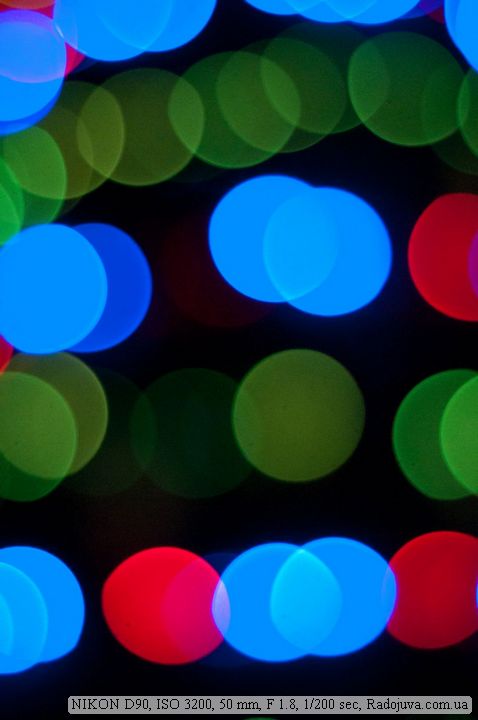
An example of ordinary Hollywood bokeh. Shot on Nikon 50mm F1.8D AF.
Cream bokeh - unlike the Hollywood one, it is designed to make the blur with a real “blurry” method, without a variety of bright rounds. In this case, the blur becomes like a cream in consistency. I always think of sweet eclairs when I think of creamy bokeh. Creamy bokeh is difficult to achieve, because all the points in the out-of-focus area try to turn into glowing discs in the image. Units of lenses can produce true creamy bokeh. Actually, an example of such a bokeh is below.
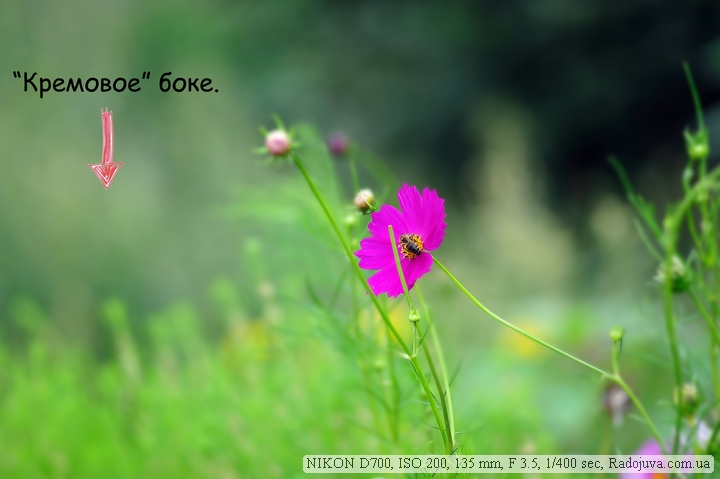
Cream bokeh example.
In its pure form, creamy bokeh is very difficult to meet, mainly all photos with pronounced bokeh have a Hollywood or mixed style.
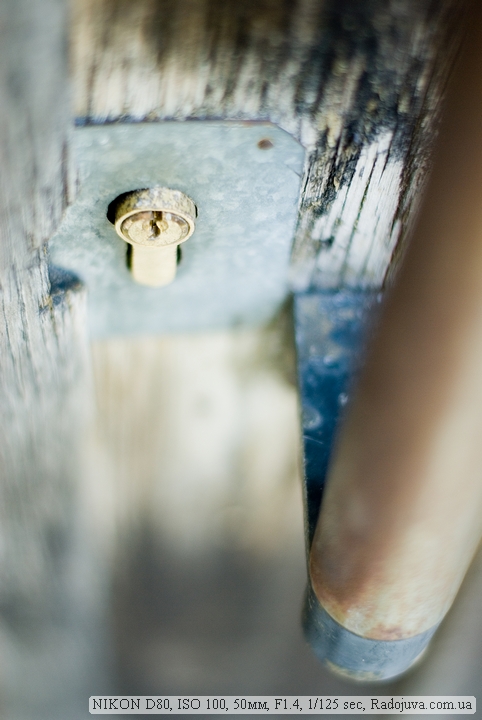
Bokeh without treatment with MDF. Weak guess at what fifty dollars filmed?
Doubling, tripling of lines
Very often, you can come across opinions of the type "image troit, double". This means that the bokeh has an unnatural appearance, in which parts of the objects in the out-of-focus area bifurcate. This can be quite dangerous, for example, when a person's blurred hand due to "double vision" gets 6-10 fingers of visual deception.
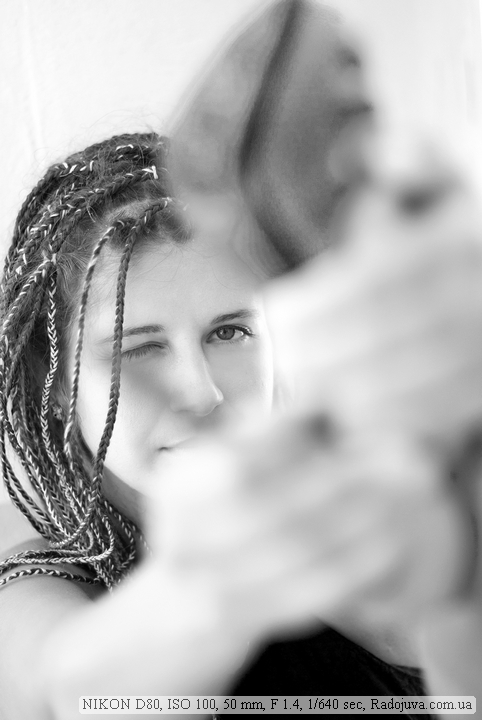
The effect of bokeh on the overall picture. Bokeh turns hands into hands in a cast.
Bokeh plays a huge role in macro photography and portrait photography.
Bokeh is very important for macro photography, since there is almost always shooting within the limits of the lens capabilities and very small MDF, the depth of field is also very small, which means that the bokeh intensity is very high.
Bokeh for portraiture Is a whole separate science. Basically, it all comes down to not focusing on the background, but highlighting only the person's portrait itself. Watch the artist. I recently saw how an artist paints my portrait, he painted only my face and shoulders on his canvas, not paying attention to the external environment at all. But I was sitting against the background of the variegated vegetation of the park. As a result, only my shoulder portrait without any unnecessary details turned out on the canvas. The artist only slightly shaded the pencil on a white sheet to add volume. Actually, with the help of the “correct” bokeh, photographers try to select only the person himself, and “shade, turn into porridge, jelly” all unnecessary ones. Below is a portrait in which the bokeh has a bright Hollywood style, and focuses part of the viewer's attention precisely on the colorful contrasting background of round circles. At the same time, the contrasting unsharp discs add their own flavor to the picture.
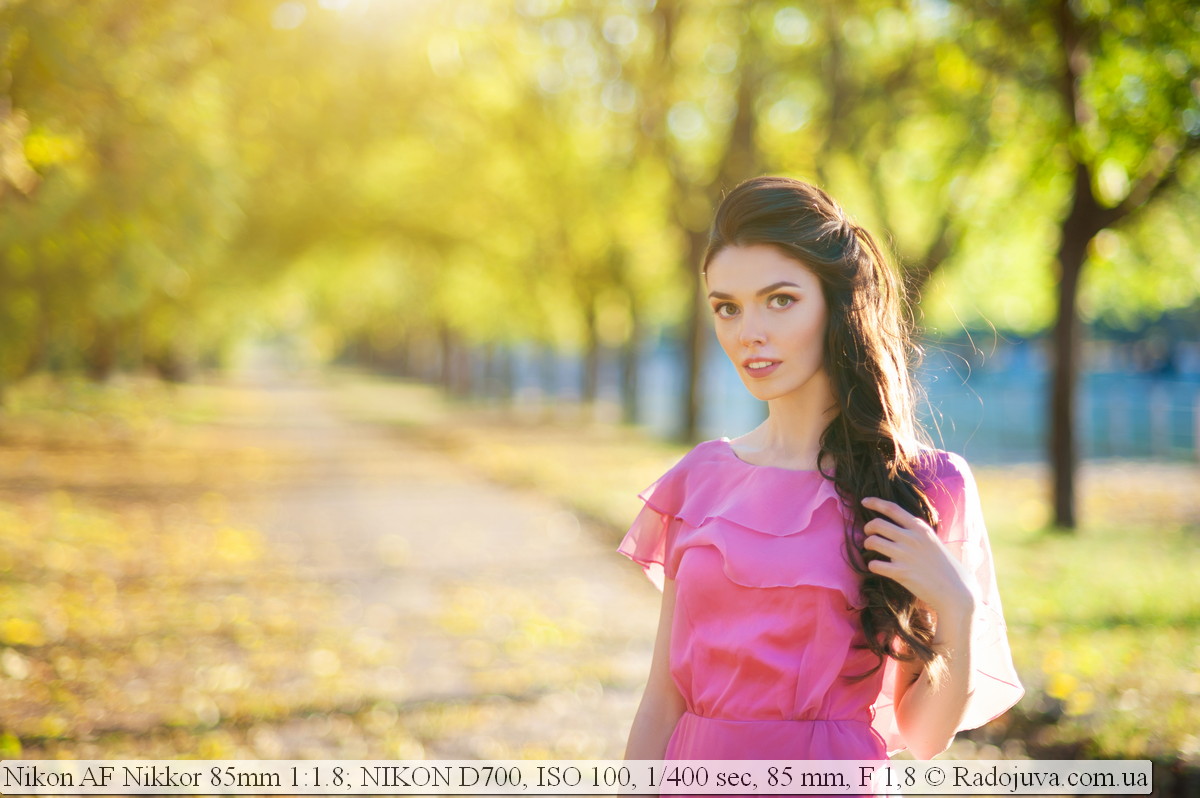
Portrait with pronounced blur of the background. Shot on Nikon D700 and lens Nikon AF Nikkor 85mm 1: 1.8
Personal experience
Often, when viewing photos, for example, on http://500px.com/, you can see only the operation of the lens itself, the bokeh of the lens, but by no means the work of the photographer. High-quality optics with “inimitable” bokeh can greatly relax the photographer and he will start to shoot any little thing with a beautiful blurred background and get “masterpieces”. Sometimes I myself suffer from this ailment, since I have to shoot sample photos for reviews on Radozhiv, and therefore, out of habit, I start shooting in a similar close up style at weddings, photo shoots, etc.
What is the right bokeh?
There is no “correct bokeh”. Everyone has their own tastes. Someone likes the twisted bokeh of Biotars, someone likes the classic bokeh from 80-200 telephoto cameras. But, if we are to get out of life, then the bokeh should be the same as the human eye sees. I have spent experiment, on the pier by the sea, I looked at the night city. The whole city was on fire. I raised my index finger in front of me and focused on it. I caught a glimpse of the discs of blur from the city in the distance. The fact that I saw shocked me, I saw kruglyashki, but they were all in some kind of torn stripes, dents. Something like bokeh "eyes" in the picture below:
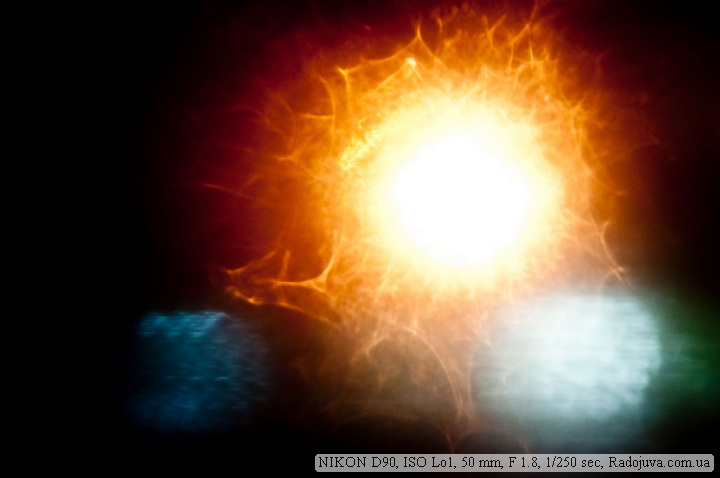
Semblance of "human" bokeh. Bokeh of a human eye.
Of course, many will not like this picture (as above). If we take “natural bokeh“Then I like the tree shadow pattern on the grass. It's not exactly bokeh, but something very similar and natural. The disks of unsharpness have a smooth tonal transition (border). Here's what I'm talking about:
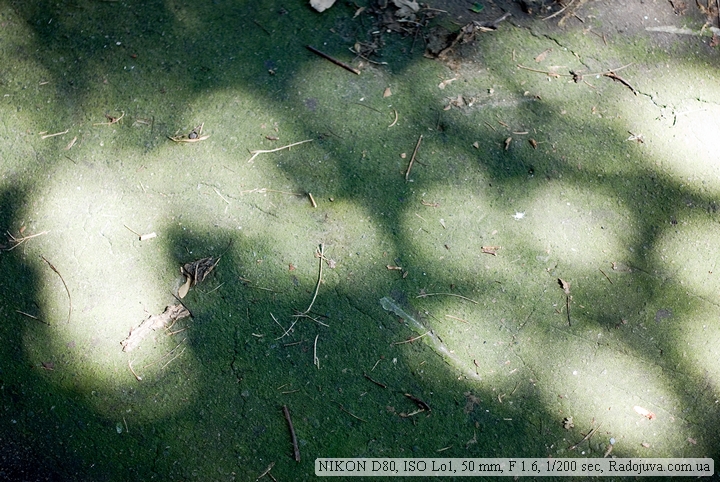
The play of the sun through the foliage of trees makes such a pattern on the earth. Something like Hollywood bokeh from nature.
Bokeh can be easily implemented programmatically. There is a million and one more plug-in for processing programs for this. But, Radozhiva does not specialize in articles about software.
Chasing bokeh
Many people buy DSLRs for the sake of taking pictures with beautiful bokeh. Often all photography stops at photographing “rounds” and interest in photography fades away. I don't recommend chasing bokeh very much. Yes, bokeh should suit your taste, but it shouldn't be the main focus of your photo. I am very often guided by one rule: if you look at the photo only at bokeh, then the photo is unsuccessful... Boke is kind of the side of the coin that no one should see. I shoot quite a lot, and not a single client has asked me a question about bokeh, nor spoke out for its "beauty" or "creaminess". Praise is always expressed in words like “wow, how beautiful, unusual”. People (not photographers) look at the picture, at themselves in the picture, for them completely different values are more important, and bokeh remains only a method for the photographer, our little secret and a panacea.
Bokeh can be really dirty from dirty lens lenses, I have a separate article about this “dirt on the side".
Lenses and lenses again
It is customary to wage two main wars on the Internet - lens sharpness and lens bokeh (aka drawing). Consider that the lens pattern will very much depend on the scene that is washed out by this very lens... For bokeh, novice photographers often use fifty (prime lenses with a 50mm focal length). The fight for the best bokeh of fifty dollars is a whole epic. Speaking for myself, at first I liked the rough “not kosher” bokeh Nikon 50mm F1.8Dthen more even and smooth Nikon 50mm F1.2 AI-S MF.
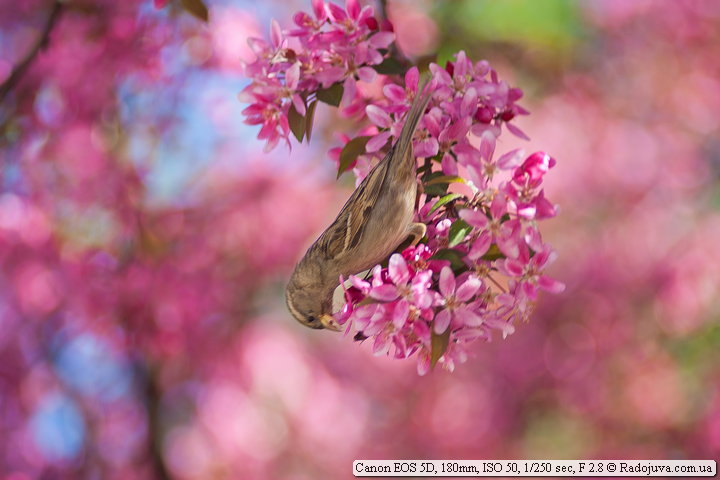
Who drew attention to the bokeh?
Sample photos with pronounced bokeh effect
The bokeh effect is very easy to get when shooting at short focus distances. In this case, even with the simplest lenses, you can squeeze out a strong blur of the background. The bokeh effect is strongly manifested during macro photography. Below are my shots on different cameras with different lenses:
Conclusions:
Boke - An interesting feature when creating photographs related to the concept of depth of field. Anything that does not fall into the field of focus can be called 'bokeh'. It is very difficult to judge the quality of the bokeh, as it is strong subjective factor.
↓↓↓ Like the article and share the link in social networks ↓↓↓. Thanks for attention. Arkady Shapoval

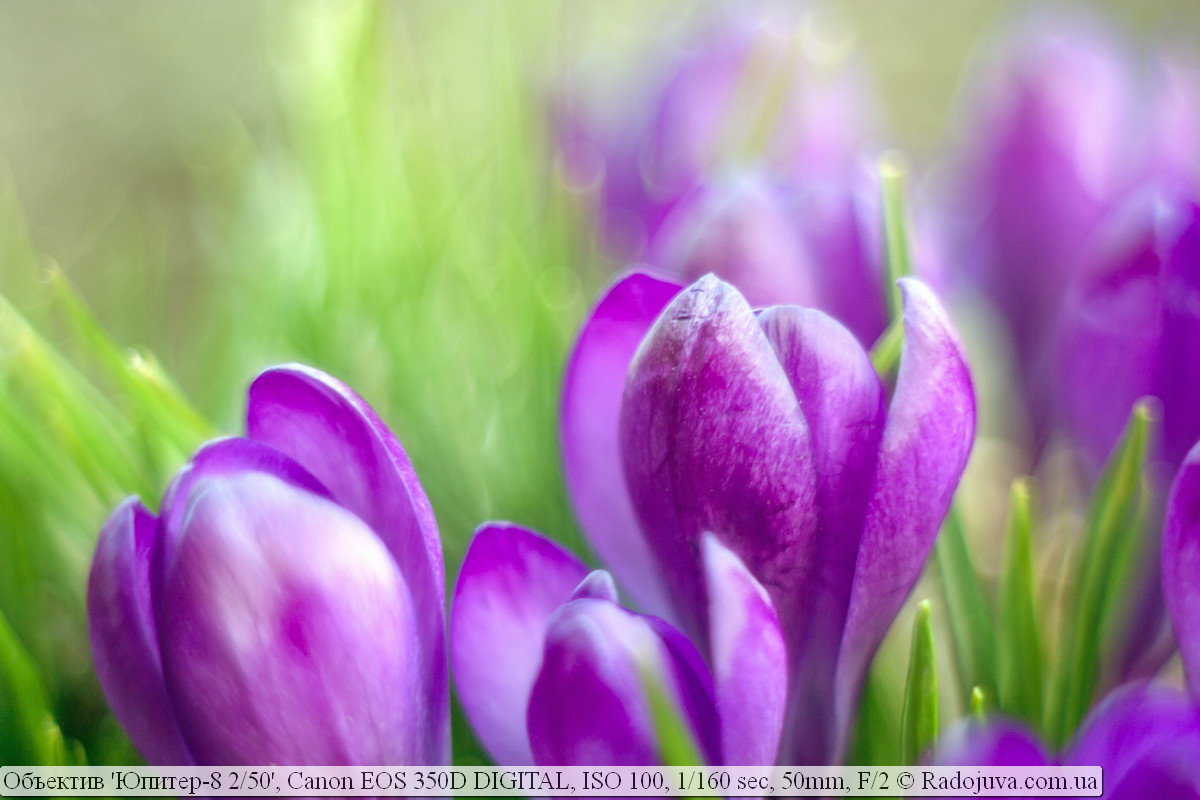
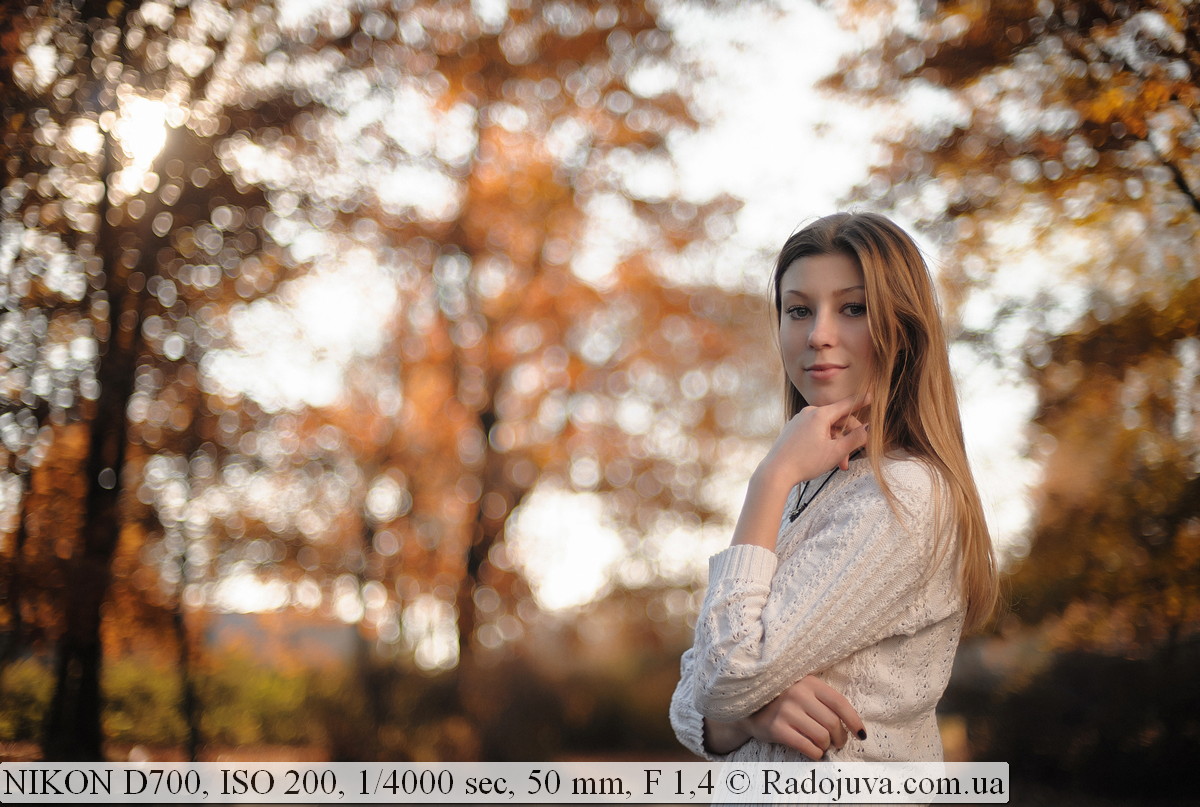
































































































I apologize for the broken link)))
http://www.flickr.com/photos/nilsvdburg/50914821/
It would be nice if not only the link was dropped but also talked about the Pin-hole effect by the October Eclipse
Arkady !!! I will correct))) I promise;)
Arkady, and on what does the screwing of the bokeh depend, so to speak, on some background photos in the form of an arch, how can this be achieved?
Depends on the lens, its characteristics. Achieve the purchase of a lens, or an image processing program.
What lenses allow to achieve such an effect? I have a Nikon D5100. just picking up a new lens)
Have you tried shooting with Soviet lenses? I want not just Hollywood bokeh, but twisted. Something like this:
http://www.flickr.com/photos/27241019@N04/7999176040/in/photostream
http://www.flickr.com/photos/27241019@N04/7123639713/in/photostream
Advise which will be better? I shoot mostly dolls, that is, the distance to the object is small. I have Nikon D3100, I bought an adapter, but I can’t decide on the lens. I have a Nikon 50mm F1.8D, but it does not give what I would like.
My article Soviet lenses will help you with this, I advise Helios-77m-4 and Helios-81n
With all due respect to you, your NOT RECOMMENDATION is not very clear (requires a COOL bokeh ...) Helios 44 series (M, 2,3,4,6,7,). Yes, there is a focal 58 and not 50 (but this was not stipulated, and in practice it is not critical ...), but the “twisting” is more pronounced there, and the glasses are cheaper. If the recommendation of Helios-81 can be partly justified for Nikon users (adapter, infinity ...), then Helios-77m-4 requires adapters similar to Helios-44xxx, but the 44th series turns “steeper”, and the 44-7 series is even sharper in the center (where the doll is ...), and costs (as a rule) a little cheaper ... Moreover, the G-77-4 has enlightenment, which is more effective in “backtracking” (but this is not required!), but stronger (in comparison with the G 44-7) distorts the colors, which is not ice at all in the case of dolls ... And if you don’t bother with “twisting”, then there is still a wonderful, and faster (read the article!) Zenitar 50mm. f1.7 ...
I somehow also got something similar to "human" bokeh))
► http://s019.radikal.ru/i624/1211/e1/569910085b2e.jpg
Thank you so much from the newcomer to photography !! Very clear, easy to remember, systematic and logical! There is something to work on and it’s clear where to move!
It's my pleasure :)
Arkady, thank you for the article, I will join everyone who commented above, an excellent article, everything is intelligible and understandable. Keep on creating! :)
Learned new, thanks for the efforts :)
How many interesting things you learn about photography ... For a beginner photographer, this is a whole science. I have a nicon d80, I had no idea that with such a camera you can become not only a photographer, but also an artist, although this is exactly what I want. Therefore, the soap dish becomes uninteresting over time. Thanks for the science, then it's up to practice :)
Thank you for the warmth of the words that this article was written.
You are an altruist, Arkady.
Perhaps you are thinking about a book ...
You can’t count any admirers, including and I. You will be rewarded.
Regarding bokeh. It seems to me that the most popular feature in household photography is the property of bokeh to hide the background, which very often does not correspond to the idea of photography. And thus it increases the possibility of obtaining high-quality photographs in almost any environment. At the same time, photography claims to be artistic in the eyes of the layman.
Thank you for the site.
Arkady THANKS huge for your work.
Everything is always well-developed, laid out on the shelves. You are a storehouse of information for beginners.
Keep it up! Bravo!
Arkady, such a question, what are you shooting for? And is it possible to achieve bokeh on the Canon 18-135mm lens?
I shoot on different lenses and cameras. Yes, 18-135 is easy to achieve, here is an example http://500px.com/photo/3726954
Thanks for the good article. I tried on sigma 17-70. It works great.
Hello Arkady!
What you write is very interesting and informative. I will join the opinion of many - it's hard to come off))
For several years now I have been doing art photography, but not for the sake of commerce, but for the soul, for people who are interested in it. I myself find models for the plot, create images, “make-up”, hairstyles and location, respectively. I find that this is how it is easier to achieve what is called “art photography” than to work with clients who do not inspire you. Due to my interests - mostly portrait photography. A question arose for you: I shoot with Nikon D90, with the stock Nikon 18-105mm f / 3.5-5.6G ED VR AF-S DX Nikkor and Nikon 50mm f / 1.8D AF Nikkor. Now I realized that I want a softer “creamy” bokeh in the pictures, just for my ideas, but at an affordable price. The salary does not quite allow for "mental needs."
Thank you in advance. I really look forward to hearing from you!
Sincerely,
Natalia S.
Nikon 85mm F1.8G, NIkon 50mm F1.4G have cream bokeh.
Thank you, Arkady, for not ignoring my request, but now I read your article “Matrix size matters” and realized that I am quoting: “And if you have an ordinary digital compact with a small matrix, then even with a fast lens you will not be able to achieve good background blur ”.
Very upset, of course ((
Or one of the lenses you proposed will still save the situation and help translate my ideas into reality ??
Thank you in advance.
Sincerely,
Natalia S.
Natalia, lenses are NOT interchangeable on compact cameras with a small sensor. You simply cannot put another lens on them. If you have an interchangeable-lens camera, then the sensor there is not very small, and the corresponding lens will make life better. How much depends on your requirements. But the larger the sensor, the higher the prices.
Best regards
PS As for the rise in prices - I should have added, “in one class” (entry level, semi-professional, professional). An entry-level DSLR with a decent sensor costs about the same as a top compact with a small sensor. But be prepared to spend on lenses. Appetite comes with eating:).
And one more thing: I read your reviews of the lenses of interest and realized that I liked the work with the Nikon AF-S Nikkor 50mm 1: 1.8G SWM Aspherical, in particular, nature, flowers in macro. Very good color rendering and the very “creamy” bokeh. Or did I mistakenly wishful thinking, because what is beautiful in macro does not necessarily work in portrait mode and, accordingly, you should not change the “awl for soap”? ...
Thank you!
Arkady, about how to see “human” bokeh: put on glasses with plus lenses (1-2 diopters is enough). Your eye will not be able to focus at infinity and the distant shot will be blurred. By the way, it looks like what you described. I think that the aberrations of one weak and thin lens are negligible.
Thank you, Igor, for the comment.
Well, let me also bring in my admiring "5 kopecks" - I, in general, about the site as a whole. Yesterday I found you by accident, today I sit without stopping all day - everything is interesting to me, a novice “photographer”. Thanks for your work! Indeed, as stated above - the best site for photos !!!
Do not forget to like the article.
Guys and tell me how such a tale can be done ???? http://vimeo.com/65004051
most likely they turn some of the lenses in the lens. Most likely the first.
this can be done on mir1, it also works well.
I’ve taken a photo since I was 13 years old (i.e. 51g.) I heard about bokeh for the first time. the article is very instructive. thanks.
Tell me which Soviet lenses have Hollywood bokeh?
Tell me which Soviet lenses have Hollywood bokeh?
I have both eyes at -7. And when I take off my glasses, I have such a BOKE - you will rock! I'm not talking about blur - this is understandable, but glare and small lights have an insanely beautiful filling.
There are interesting thoughts! On the example of NIKON lenses) And for the rest - the Internet in hand.
But anyway:
To please the eyes
And just not to distract -
Ideal boke.